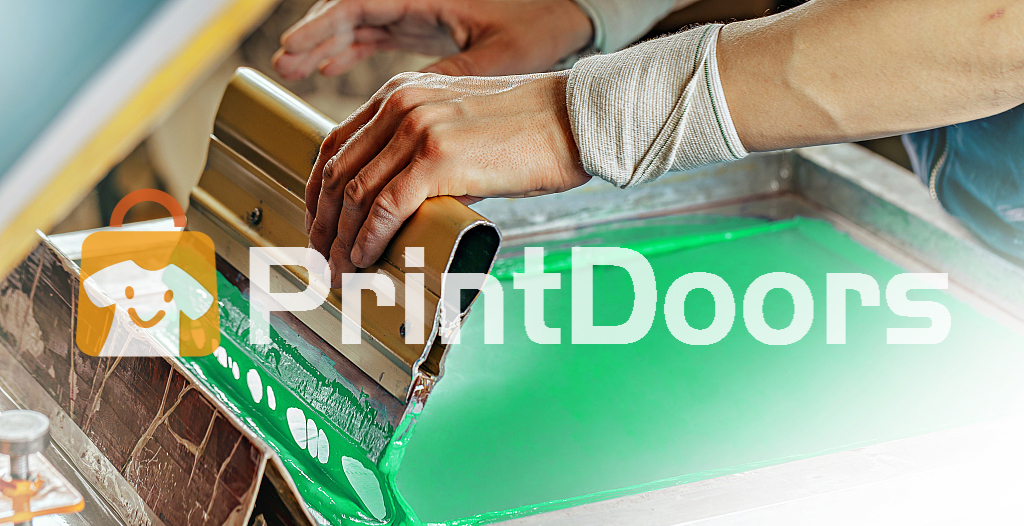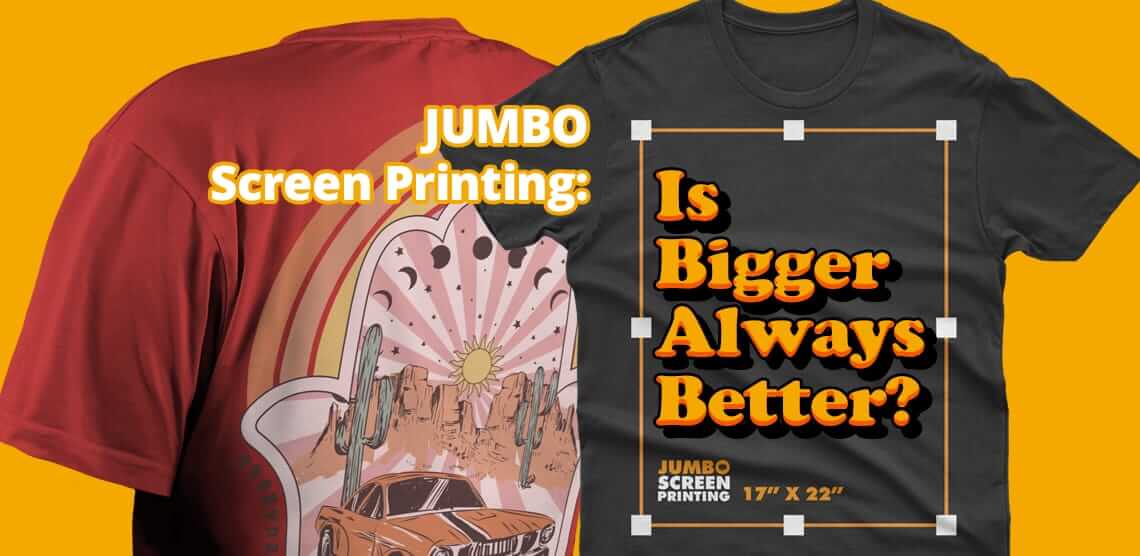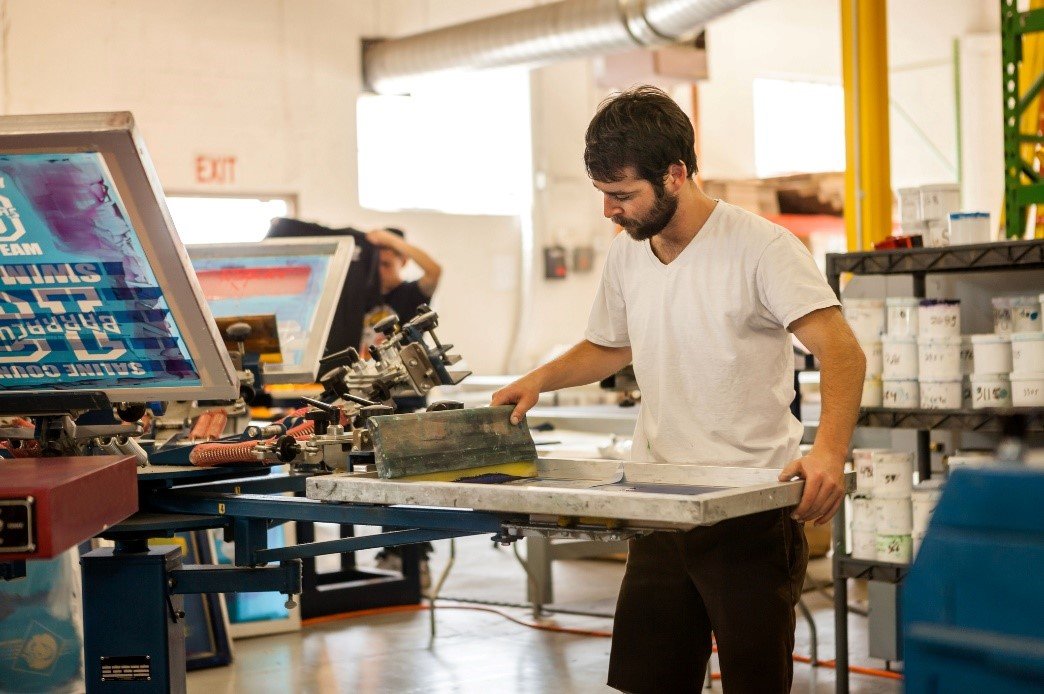Everything about Tx Tees
Getting My Tx Tees To Work
Table of ContentsThe Only Guide for Tx TeesSome Known Facts About Tx Tees.5 Easy Facts About Tx Tees ExplainedThe Ultimate Guide To Tx TeesThe Only Guide for Tx TeesThe Best Guide To Tx TeesNot known Factual Statements About Tx Tees
That brings your overall to roughly $1,900 before tax and shipping. Accumulate various other expenses, like the number of utilities it requires to run the store and the cost of ink and solution per style. screen printing shop. Take the print listed below for instance. This is a one-color picture, so the cost of ink per shirt is about 20 cents.The solution ought to just be a couple of cents considering that you 'd just need to coat one screen for this job. Normally, printers attempt to make up to 45% profit on a print work.

With DTF, you can publish a handful of tee shirts, or just one. Make use of the very same calculator as the area above to calculate just how much earnings you would certainly use DTF transfers. Contrast the costs and profits to whichever approach talks best to your arrangement and process. Both display printing and DTF have their specific niches in the world.
Tx Tees for Dummies
The very best way to understand? Ask about and see what printing shop like your own are doing. screen printer. Attempt both out and see which you like far better
When you're picking what kind of printing technique to utilize for publishing your art work styles on your garments, it is essential that you know the differences in between these two methods so you can maximize results while reducing costs. Screen printing is the most typically utilized method for printing styles on textiles.
DTG printing is likewise understood as area or direct to garment printing due to the fact that it publishes just what is needed rather than making a screen as screen printers do. http://go.bubbl.us/e0be4a/f460?/TX-Tees. Screen printing functions by screen filler squeegee display printing ink display mesh screen, after that transferring the picture to garment using warmth and/or pressure
The DTG printer makes use of special dye-sublimation inks that are used into a pre-designed image by an electronic printing system. The inks enter into the fabric, permitting lively shades and outstanding detail. It's additionally known as place or direct to garment printing since it publishes only what is required as opposed to making a screen as display printers do.
An Unbiased View of Tx Tees
Initially, it's much quicker - you can print a fullcolor picture in mins, in contrast to hours for display printing. Second, there's no set up time or expenses entailed - you can print any design you like, without having to develop a screen first. Third, there's no waste - because screen printers screen print one design at a time, they have to screen each color individually.
The paper is very expensive and can only be used when. Once it's printed on, it has to be disposed of. - The preliminary purchase rate is less than the ahead of time investment of DTG printers- You can publish multi-color layouts one display at a time instead of needing to publish each shade independently like DTG printing.

Get This Report on Tx Tees
Instead of making use of display mesh as screen printers do, color sublimation printers make use of laser technology to move your photos onto garments or paper. A heat process transfers the dye from its solid-state directly right into the gas stage which subsequently fuses it onto textile substrates when they are quickly heated up to heats under high stress.
Sublimation printing is eco-friendly. It utilizes much less water than screenprinting, and due to the fact that it does not entail the usage of hazardous solvents, it's risk-free for all kinds of clothing. The color sublimation inks are likewise odor-free when healed, unlike display printers that make use of unsafe chemicals during the display printing procedure that leave an undesirable smell.
They also save money on expensive devices like direct exposure devices given that color sublimation printers do not call for a UV exposure system or a flash cure oven that is usually utilized in display printing (custom t-shirt design). What is straight to garment printing (DTG Printing)? DTG printing is a digital screenprinting process that publishes straight onto textile making use of specialized inkjet printers
Unknown Facts About Tx Tees
DTG printing offers several benefits over traditional screenprinting, consisting of the capability to print photo high quality images, higher this color vibrancy, and the ability to publish designs on darker textiles. DTG printers work by heating the fabric ink until it transforms into a gas. The gas after that permeates the textile, bonding with the fibers to produce a permanent print.

Display printers just prepare their screen then begin publishing up until they run out of product or ink.- There is a wide array of skilled display printers all over the world, which can be practical for newbies. - It's a slower procedure - display printers typically have to wait on the ink to dry before they can print the following color- Display printers call for hands-on labor, so there's a higher knowing contour and it takes longer to generate a top quality design- Display printing isn't as precise as DTG printing, so you may get some "bleeding" of shades from one part of the image onto an additional if not done effectively.
Getting My Tx Tees To Work
Rather of using display mesh as screen printers do, dye sublimation printers make use of laser technology to move your photos onto garments or paper. A warm process moves the dye from its solid-state directly right into the gas phase which consequently merges it onto textile substrates when they are quickly warmed to heats under high pressure.
Sublimation printing is eco-friendly. It utilizes much less water than screenprinting, and because it doesn't include using hazardous solvents, it's risk-free for all kinds of apparel. The dye sublimation inks are likewise odor-free when healed, unlike screen printers that utilize dangerous chemicals throughout the display printing process that leave behind an undesirable smell.
They likewise conserve cash on costly equipment like exposure systems given that dye sublimation printers don't need a UV exposure system or a flash remedy stove that is generally utilized in screen printing. What is direct to garment printing (DTG Printing)? DTG printing is a digital screenprinting process that publishes straight onto textile making use of specialized inkjet printers.
The 7-Minute Rule for Tx Tees
DTG printing offers several advantages over standard screenprinting, including the ability to publish photo high quality pictures, greater shade vibrancy, and the ability to print layouts on darker materials. DTG printers work by heating the fabric ink until it develops into a gas. The gas then permeates the textile, bonding with the fibers to produce a permanent print.